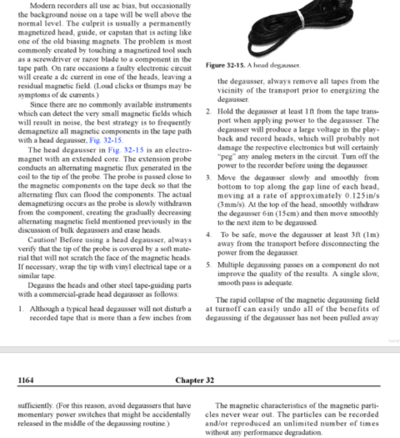| Welcome to Sprocket School! This project is maintained by volunteer editors. Learn more about how this works. |
Magnetic sound: Difference between revisions
Jump to navigation
Jump to search
No edit summary |
|||
| Line 13: | Line 13: | ||
==Storage== | ==Storage== | ||
*Acetate prints with magnetic soundtracks are especially prone to vinegar syndrome. Signs of decay might be flaking mag track, stickiness, vinegar smell, warping. | *Acetate prints with magnetic soundtracks are especially prone to vinegar syndrome. Signs of decay might be flaking mag track, stickiness, vinegar smell, warping. | ||
* | *Magnetic oxide is applied to the [[film base]]. For long term storage prints should be emulsion in (so the magnetic stripes will be facing out). Storing prints the wrong way risks "print-thru" where-in the oxide begins to rub off onto the layer of film below it. | ||
==See Also== | ==See Also== | ||
Revision as of 09:03, 21 April 2018
- 70mm mag prints
- 35mm mag prints
- 16 mag prints
- mag tracks and vinegar syndrome, storage practices
70mm Mag Sound Formats
Degaussing
- why we do it, how we do it

Storage
- Acetate prints with magnetic soundtracks are especially prone to vinegar syndrome. Signs of decay might be flaking mag track, stickiness, vinegar smell, warping.
- Magnetic oxide is applied to the film base. For long term storage prints should be emulsion in (so the magnetic stripes will be facing out). Storing prints the wrong way risks "print-thru" where-in the oxide begins to rub off onto the layer of film below it.